Get ready to plunge into a world that’s more than just fantasy—it’s the riveting universe of J.K. Rowling’s Harry Potter series! This is more than just a youthful wizard’s tale. From its inception in 1997, it has metamorphosed into a global sensation, offering a captivating guide for writers to study the evolution of a fiction series, particularly when read in order.
Rowling’s enchanting narrative doesn’t just revolve around magic and mythical creatures. It’s an intricately woven tapestry of fantasy, mystery, and a poignant coming-of-age story that resonates with readers across the globe. And let’s not forget the characters—remarkably human, flawed, and compelling, their magic serving as a mere embellishment to their relatable struggles and triumphs.
The Harry Potter world is a parallel universe as expansive and intricate as our own. It invites readers—and aspiring writers—to embark on an unforgettable journey through its realms. Studying the progression of the Harry Potter books in order is a rewarding venture for any literature enthusiast or budding author. Are you ready to step into this spellbinding saga?
Before we begin, here’s a list of the Harry Potter books in order:
- “Harry Potter and the Philosopher’s Stone” (known as “Harry Potter and the Sorcerer’s Stone” in the US) – first published on June 26, 1997.
- “Harry Potter and the Chamber of Secrets” – first published on July 2, 1998.
- “Harry Potter and the Prisoner of Azkaban” – first published on July 8, 1999.
- “Harry Potter and the Goblet of Fire” – first published on July 8, 2000.
- “Harry Potter and the Order of the Phoenix” – first published on June 21, 2003.
- “Harry Potter and the Half-Blood Prince” – first published on July 16, 2005.
- “Harry Potter and the Deathly Hallows” – first published on July 21, 2007.
And outside of the main series, we have these additional Harry Potter books in order:
- “Fantastic Beasts and Where to Find Them” – first published on March 1, 2001.
- “Quidditch Through the Ages” – first published on March 1, 2001.
- “The Tales of Beedle the Bard” – first published on December 4, 2008.
- “Harry Potter and the Cursed Child” – premiered in London on July 30, 2016.
- “Fantastic Beasts and Where to Find Them: The Original Screenplay” – first published on November 18, 2016.
- “Fantastic Beasts: The Crimes of Grindelwald: The Original Screenplay” – first published on November 16, 2018.
Lessons for writers from the Harry Potter book series
Now, before delving into the series’ chronological detail, let’s lay down some foundational information.
J.K. Rowling’s Harry Potter universe exists as a parallel reality—witches and wizards are our neighbors, living among us, expertly hidden. It’s a universe that stretches from the imposing edifice of Hogwarts School of Witchcraft and Wizardry to the dynamic Diagon Alley, a lively magical marketplace. This world is bursting with elements of fantasy, yet meticulously intertwined with our own.
The protagonist of this universe is Harry Potter. An ordinary boy who, on his eleventh birthday, learns of his extraordinary magical heritage. His closest allies? Hermione Granger and Ron Weasley. The trio embarks on a roller coaster of adventures, brimming with spells, mythical creatures, and labyrinthine secret passages.
However, this series is more than a fantastical journey. To aspiring writers, Rowling’s books offer a goldmine of insight. By exploring the Harry Potter books in sequence, you can study how an epic narrative unfolds, evolves, and climaxes.
It’s a unique opportunity to learn storytelling craft from a master, offering invaluable lessons to incorporate into your own fiction writing. This understanding of the Harry Potter series‘ progression could well be your secret spell to creating captivating stories.
Why should you explore the order of the Harry Potter books?

Dive into the Harry Potter series and you’re on a journey of incredible evolution. Starting with “The Philosopher’s Stone”, we see a young, innocent Harry entering the world of magic—a simple tale of good versus evil. But as the series advances, the layers start to peel back, exposing a much more complex narrative. Each book delves deeper, presenting an intricate web of relationships, politics, and moral dilemmas.
By the time we reach “The Deathly Hallows”, the series has matured significantly, presenting a stark contrast to the relatively light-hearted beginning. The themes grow darker, the characters richer, and the plot twists more surprising, demonstrating Rowling’s storytelling prowess at its finest. It’s a compelling case study for novel writers, showing how a series can evolve in depth and complexity over time.
Does that sound like something worth reading? No need to head to platform nine and three quarters – let’s get straight to it!
The main series of Harry Potter books in order
Let’s take a closer look at each of the main Harry Potter books in the order they were written to see how they progress and the lessons you can learn from each.
1. Harry Potter and the Philosopher’s Stone
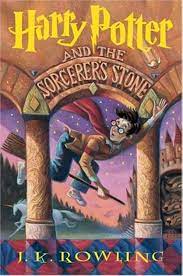
In the first of the series, “Harry Potter and the Philosopher’s Stone,” Harry learns of his magical heritage and begins his education at Hogwarts School of Witchcraft and Wizardry. He uncovers the secret of the Philosopher’s Stone and faces off against the evil Lord Voldemort. This book lays the groundwork for the series, introducing the main characters, the magical world, and the primary conflict.
Distinguished by its light-hearted tone and youthful innocence, this book differs from the others by being primarily a children’s adventure story. It focuses more on world-building, exploring the magic, and setting up the mystery rather than delving into complex character arcs or moral dilemmas.
For fiction writers, this book is a masterclass in how to introduce a new world and its rules without overwhelming the reader. It highlights the importance of a strong start, character introduction, and setting up a conflict that can be explored further in the subsequent books.
2. Harry Potter and the Chamber of Secrets
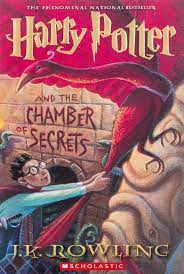
In the second book, “Harry Potter and the Chamber of Secrets,” Harry, along with his friends, discovers a mysterious chamber within Hogwarts and battles a beast within. The book introduces the concept of prejudice within the wizarding world and advances the overarching narrative by revealing more about Harry’s connection with Voldemort.
While the book retains the sense of wonder and exploration from the first, it brings in more sinister elements, creating a more suspenseful atmosphere. It takes a step further into the world of Harry Potter, delving deeper into the lore, characters’ past, and moral complexity.
For writers, this book showcases how to effectively balance elements of suspense with world-building. It exemplifies how a second book can continue the story while also adding depth to the characters and introducing new themes.
3. Harry Potter and the Prisoner of Azkaban
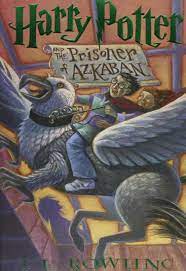
The third book, “Harry Potter and the Prisoner of Azkaban,” introduces the concept of time travel and presents a more complex antagonist in Sirius Black, who turns out to be Harry’s godfather and an ally. The book enriches Harry’s backstory and deepens his connection with his parents.
The style of this book marks a departure from the first two, adopting a darker, more mature tone. It moves away from the straightforward battle between good and evil, introducing moral grey areas, and focusing on character development.
This book is an excellent lesson in subverting readers’ expectations and developing characters. It illustrates the importance of backstory in shaping characters and highlights how the inclusion of ethical ambiguities can add depth to the narrative.
4. Harry Potter and the Goblet of Fire
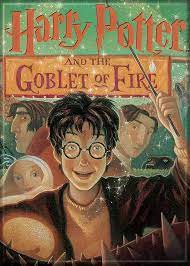
“Harry Potter and the Goblet of Fire” sees Harry unwillingly competing in the dangerous Triwizard Tournament. It ends with a dramatic showdown with Voldemort, who regains his full power. The plot expands to include the wider wizarding world beyond Hogwarts.
The tone of the series shifts significantly with this book. It’s darker, with the stakes raised higher than ever before. Themes of mortality, sacrifice, and corruption come into play, adding a new level of complexity to the story.
From a writing perspective, the fourth book demonstrates how to expand a universe effectively, create suspense with high-stakes events, and manage multiple plotlines. It also shows how to successfully transition a series from a lighter tone to a darker one.
5. Harry Potter and the Order of the Phoenix
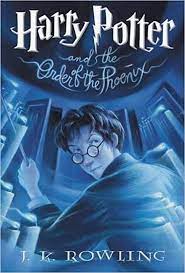
In the fifth installment, “Harry Potter and the Order of the Phoenix,” Harry, along with his friends, forms Dumbledore’s Army to fight against the rising power of Voldemort and the denial of the Ministry of Magic. The book explores themes of authoritarianism, resistance, and the cost of war.
This book introduces a more complex political landscape, highlighting the dangers of denial and the misuse of power. It’s characterized by a more rebellious and darker tone, with Harry struggling with his anger and grief.
For writers, this book offers insight into how to handle character development amid external turmoil. It provides a nuanced exploration of political themes, demonstrating how to effectively incorporate such issues into a story without detracting from the personal narratives of the characters.
6. Harry Potter and the Half-Blood Prince
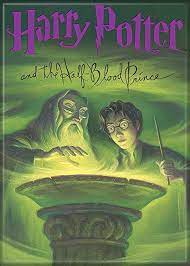
“Harry Potter and the Half-Blood Prince,” the sixth book, delves into the backstory of Voldemort, providing insight into his rise to power. This book further develops the characters’ personal lives, particularly their romantic relationships, while building up to the final battle against Voldemort.
The book continues with the darker tone, but also balances it with moments of humor and teenage romance. It focuses more on character relationships and personal growth, setting the stage for the upcoming final confrontation.
The sixth book illustrates how backstory can add depth to a villain’s character, making them more understandable, if not sympathetic. It also shows how personal relationships can provide relief amidst darker themes, keeping readers invested in the characters’ journey.
7. Harry Potter and the Deathly Hallows
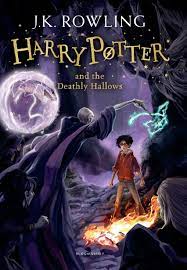
The final book, “Harry Potter and the Deathly Hallows,” culminates in the epic Battle of Hogwarts. Harry and his friends hunt for Horcruxes—parts of Voldemort’s soul—in a desperate attempt to defeat him. The series ends with an epilogue showing the characters’ lives 19 years later.
The last book is markedly different, as much of it takes place outside Hogwarts. It’s a culmination of all the previous books, wrapping up character arcs and tying up loose ends. It’s a bittersweet farewell to the characters and the world the readers have come to love.
For writers, the final book showcases how to bring a series to a satisfying conclusion, wrapping up multiple storylines while leaving room for the characters to grow beyond the pages. It also demonstrates the importance of creating a consistent world and characters that readers can stay invested in over an extended series.
Extra books and plays from the Harry Potter universe
One of the reasons fans love the world of Harry Potter so much is due to the rich lore created by Rowling outside of the main series. These books and plays consist of:
1. “Harry Potter and the Cursed Child” is a play that explores the life of an adult Harry Potter and his youngest son, Albus. It dives into the complexities of parent-child relationships and the struggle to escape one’s legacy. The narrative includes time travel, offering a different perspective on known events, and reintroduces familiar characters, enhancing their depth and humaneness.
2. “Fantastic Beasts and Where to Find Them” is a guidebook masquerading as a Hogwarts textbook. It provides an overview of magical creatures, exploring their nature, habits, and habitats. The book broadens the scope of the magical world beyond what’s been seen in the Harry Potter series, fostering a deeper understanding of its intricate diversity.
3. “Quidditch Through the Ages” provides a comprehensive history of the wizarding world’s favorite sport. It’s a delightful blend of factual information and fictional humor that allows readers to delve deeper into the cultural aspects of the magical world, thereby adding another layer to the universe Rowling has created.
4. “The Tales of Beedle the Bard” is a collection of wizarding fairy tales, each carrying a moral lesson. The stories offer a glimpse into the cultural folklore and belief system of the magical world, providing a different perspective on the values and societal norms within it.
5. “Hogwarts: An Incomplete and Unreliable Guide” takes readers on an informative journey through the nooks and crannies of the Hogwarts School of Witchcraft and Wizardry. It reveals new information about the school’s history, magical properties, and secrets, deepening the readers’ understanding of a central setting in the series.
6. “Short Stories from Hogwarts of Power, Politics, and Pesky Poltergeists” explores darker themes, focusing on the struggles for power within the wizarding world. It provides insight into the politics of the magic realm, as well as the life stories of several less prominent but still intriguing characters, adding to the overall complexity of the world.
7. “Short Stories from Hogwarts of Heroism, Hardship, and Dangerous Hobbies” reveals the courageous and often difficult lives of some of Hogwarts’ staff members. It highlights the sacrifices made and hardships endured by these characters, providing a more comprehensive view of the series’ secondary characters and the impact they have on the overall narrative.
8. “Fantastic Beasts and Where to Find Them: The Original Screenplay” is the script for the film of the same name, which expands the Harry Potter universe by introducing new characters, magical creatures, and settings. Set in New York in the 1920s, it provides a new perspective on the wizarding world, highlighting the series’ global reach.
9. “Fantastic Beasts: The Crimes of Grindelwald – The Original Screenplay” delves into the dark past and deeds of the wizard Gellert Grindelwald. The narrative builds tension and conflict on a larger scale, providing a more intricate exploration of the historical events of the wizarding world and introducing new layers of moral complexity.
Have you enjoyed exploring the magical world of the Harry Potter books in order?
Having journeyed through the magical world of Harry Potter in its intended sequence, we’ve seen how the narrative evolves, how themes mature, how characters develop, and how the stakes rise with each book. It’s a fascinating exploration into the crafting of a series that has not only entertained millions worldwide but has also effectively stood the test of time. For writers seeking to create a series of their own, studying this progression provides a treasure trove of inspiration, guidance, and invaluable lessons.
By understanding the progression of the Harry Potter series, you can learn how to weave intricate plots, create compelling characters, tackle diverse themes, and maintain reader engagement over multiple books. You’ll see how to introduce a new world, develop it over time, and finally, bring the story to a satisfying conclusion. From the light-hearted innocence of “Philosopher’s Stone” to the poignant maturity of “Deathly Hallows,” the Harry Potter series stands as a powerful testament to the magic of well-crafted storytelling.

